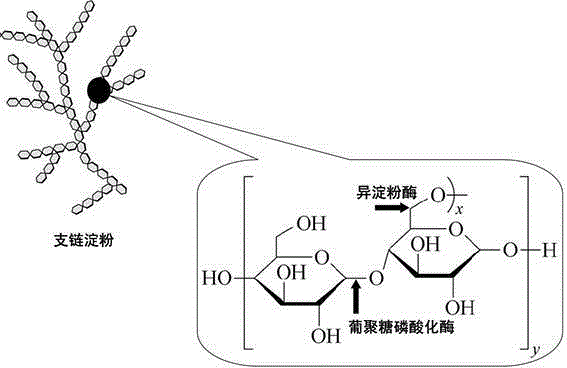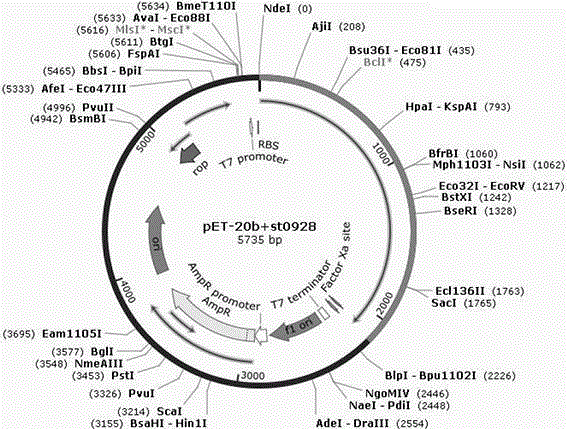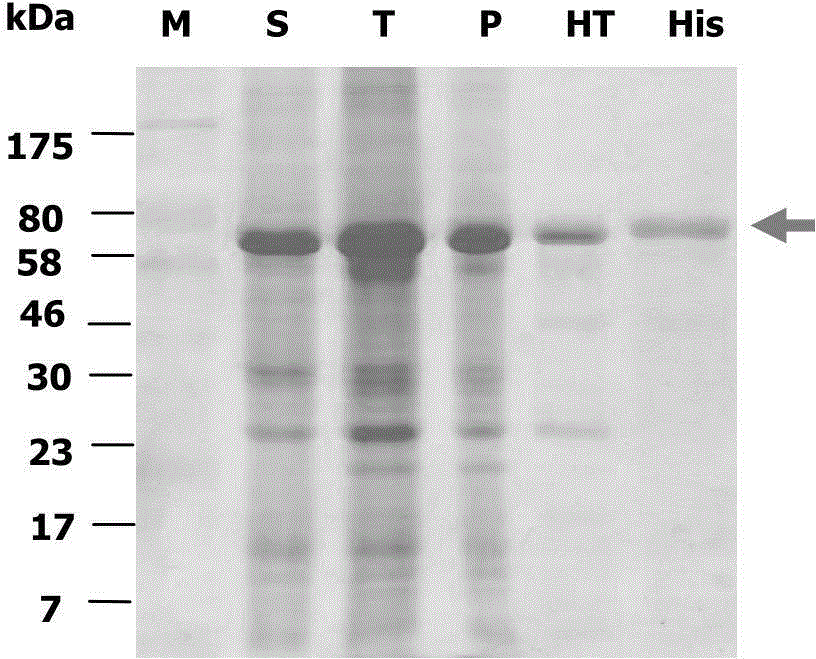Cloning, expression and application of high temperature resistance isoamylase genes
A technology of isoamylase and high temperature resistance, which can be used in applications, genetic engineering, plant genetic improvement, etc., and can solve problems such as poor stability and heat intolerance
- Summary
- Abstract
- Description
- Claims
- Application Information
AI Technical Summary
Problems solved by technology
Method used
Image
Examples
Embodiment 1
[0029] The high temperature resistant isoamylase gene provided by the present invention has a DNA sequence as shown in SEQ ID NO.1, with a full length of 2151bp. The gene is obtained from the KEGG (Kyoto Encyclopedia of Genes and Genomes) database. Sulfolobus tokodaii It was obtained by screening in the genome, and its code is: ORF ST0928.
[0030] The high-temperature-resistant isoamylase encoded by the high-temperature-resistant isoamylase gene has an amino acid sequence as shown in SEQ ID NO.2, including 716 amino acids, and a molecular weight of 83.1KDa, wherein amino acids 17 to 108 of the coding sequence belong to the 48th family Carbohydrate binding module (CBM); 204-545 amino acids of the coding sequence are the catalytic domain of amylase; 546-716 of the coding sequence are unknown functional polypeptides; the enzyme was presumed to be a glycogen debranching enzyme before the application of the present invention, The present application has been verified to prove tha...
Embodiment 2
[0076] Since the main purpose of the present invention is to use the prepared high-temperature-resistant isoamylase in biofuel cells, the specific application of the high-temperature-resistant isoamylase in this example is briefly introduced as follows.
[0077] The biofuel cell used in this example is improved on the basis of the published literature method (Zhu et al. Nat. Commun., 2014, 5, 3026), and the structural principle is as follows Figure 4 shown.
[0078] The enzymatic biofuel cell designed in this embodiment is a single-pole chamber without a diaphragm type, and its structure includes: a reaction vessel, an ion exchange membrane and a reactant;
[0079] The reactants include: starch, high temperature resistant isoamylase, α-glucan phosphorylase, phosphoglucomutase, 6-phosphate glucose dehydrogenase, dihydrolipoic acid dehydrogenase, HEPES buffer, NaCl 、NAD + , Mg 2+ , Mn 2+ and electron shuttles (AQDS).
[0080] Specific physical structures such as Figure 5...
PUM
| Property | Measurement | Unit |
|---|---|---|
| Molecular weight | aaaaa | aaaaa |
| Molecular weight | aaaaa | aaaaa |
Abstract
Description
Claims
Application Information
 Login to View More
Login to View More - R&D
- Intellectual Property
- Life Sciences
- Materials
- Tech Scout
- Unparalleled Data Quality
- Higher Quality Content
- 60% Fewer Hallucinations
Browse by: Latest US Patents, China's latest patents, Technical Efficacy Thesaurus, Application Domain, Technology Topic, Popular Technical Reports.
© 2025 PatSnap. All rights reserved.Legal|Privacy policy|Modern Slavery Act Transparency Statement|Sitemap|About US| Contact US: help@patsnap.com



